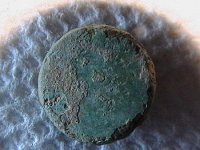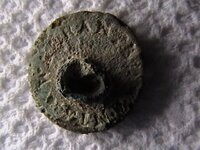WHADIFIND
Gold Member
This appears to be an early 1800's button. It's tiny. Usually when I find these I can't see ANY detail on them. But, somehow, this tiny little survivor managed to hold onto a few letters on the back. Even after, who knows how many years in the ground?
Anyone familiar with this back marking? I think it says Warranty Fine.
Thanks!
HH!
Anyone familiar with this back marking? I think it says Warranty Fine.
Thanks!
HH!




 )
)